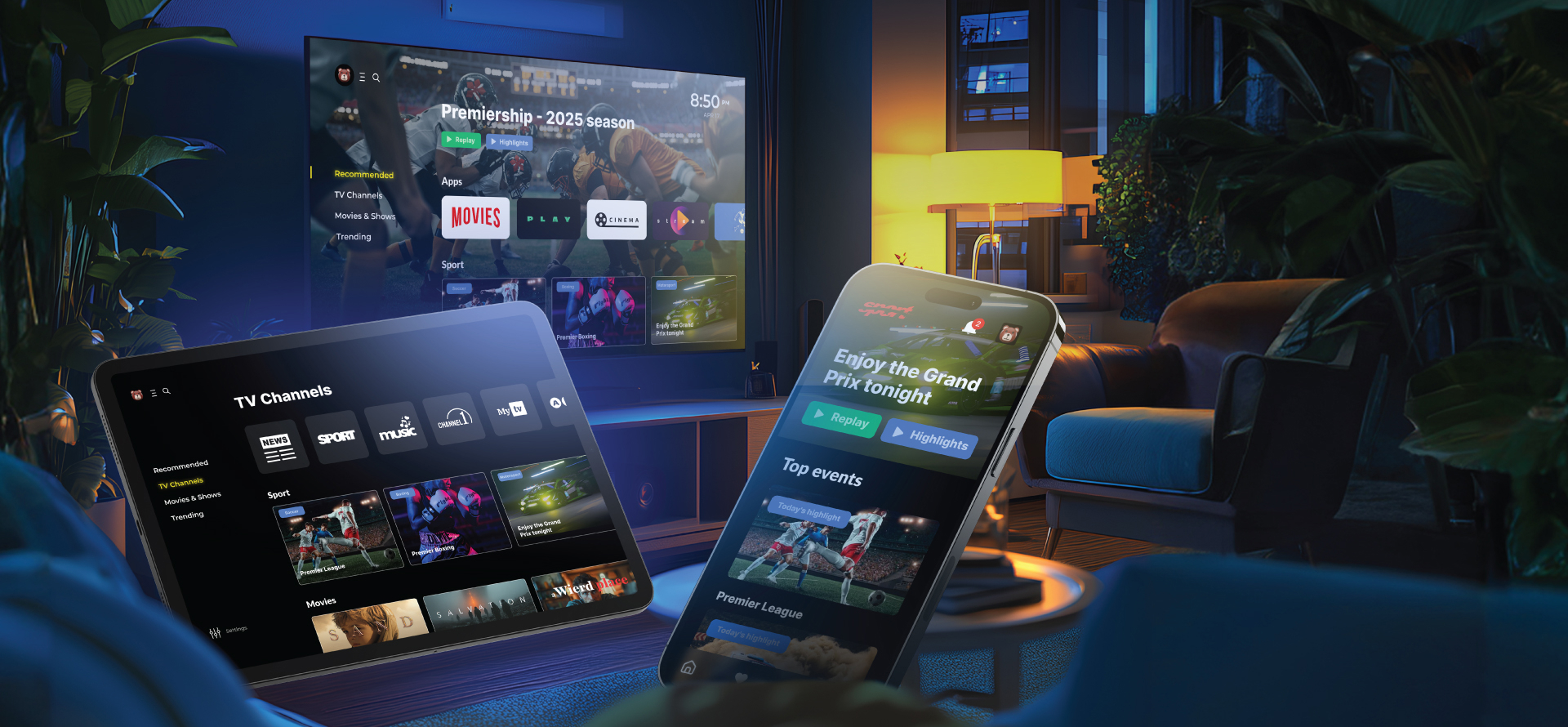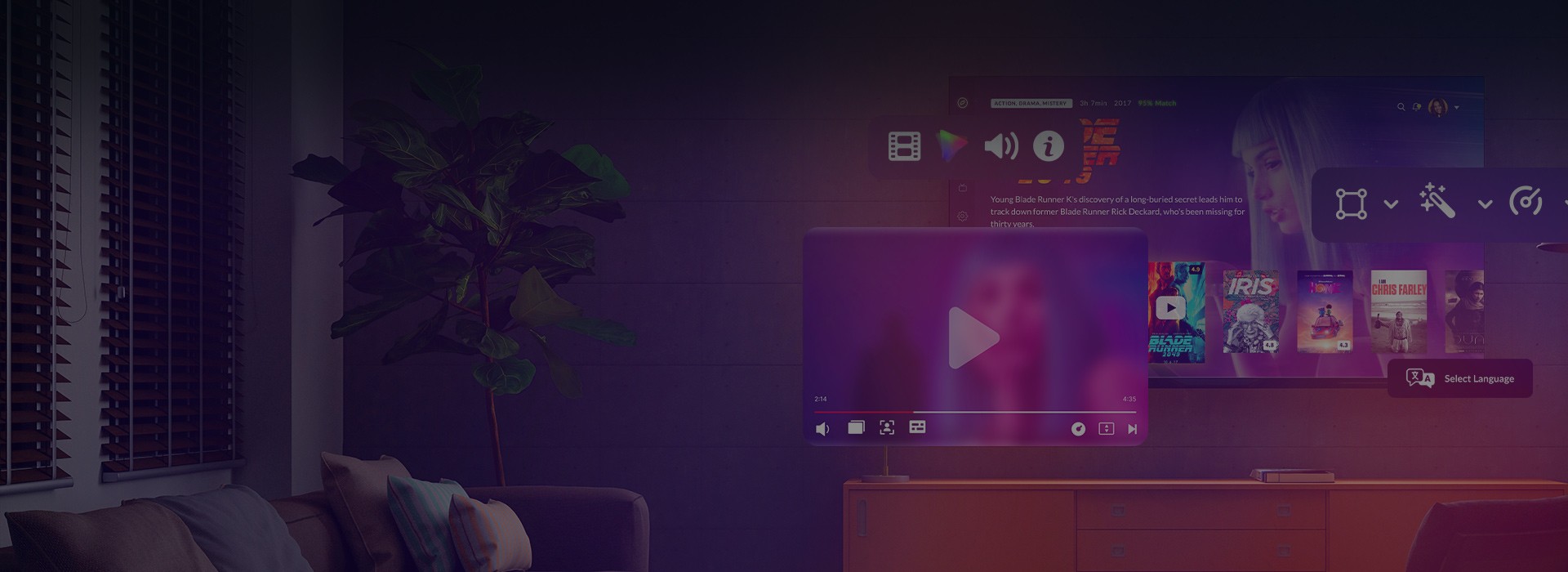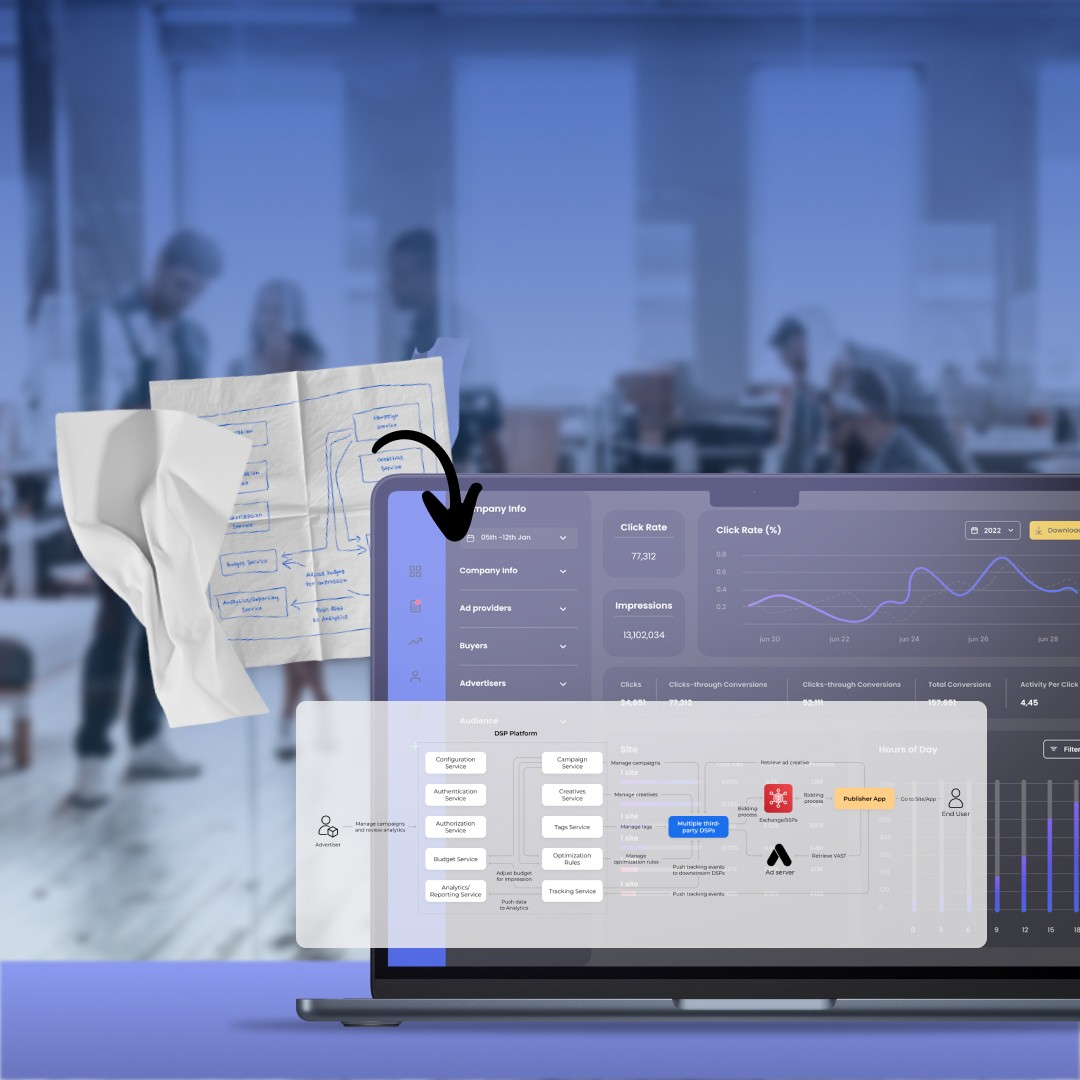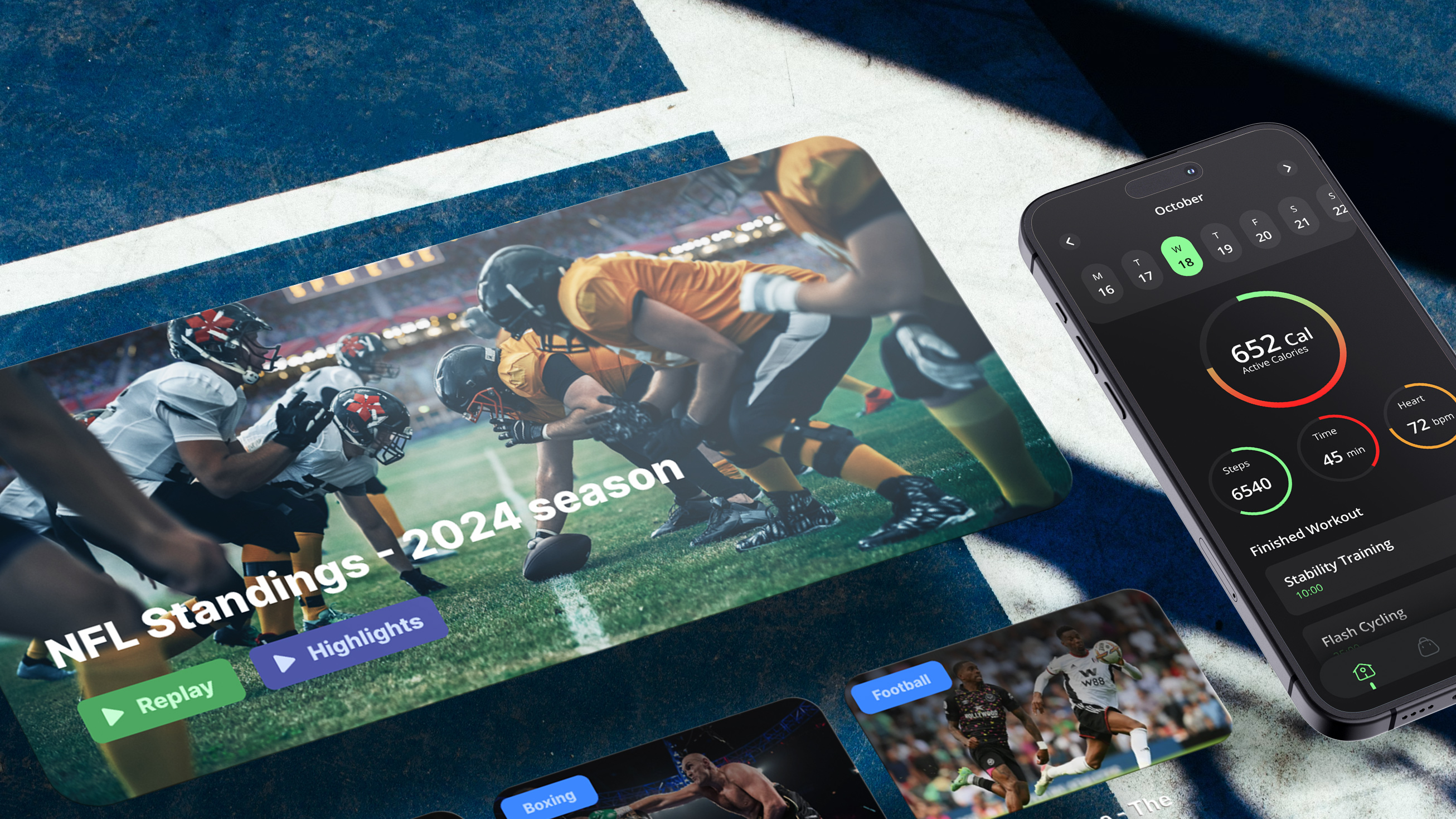The media consumption landscape is undergoing a seismic shift. Viewers are cutting the cord, streaming content on demand, and expecting seamless experiences across all their devices. For content distributors and broadcasters, this evolution is both a challenge and a major opportunity.
If you’re considering how to deliver your content over the internet — bypassing traditional cable and satellite infrastructure — you’re likely already exploring what OTT platform development is all about. In this article, we unpack the OTT platform meaning, the technology stack behind it, monetization strategies, and how to approach OTT product development — custom vs. ready-made.
What is an OTT platform?
The term OTT stands for “over-the-top,” referring to content streamed over the internet rather than through conventional TV distribution. An OTT streaming platform allows users to access media — live or on-demand — from Smart TVs, desktops, smartphones, tablets, and set-top boxes without a cable subscription.
If you’re familiar with services like Netflix, Disney+, or Hulu, you already understand the basics of OTT video platforms. These platforms are reshaping how consumers engage with content. But OTT isn’t just for entertainment giants — it’s an accessible strategy for medium- and small-sized content aggregators, broadcasters, and niche publishers alike.
From a business perspective, OTT platforms represent a flexible, scalable way to:
- reach new and global audiences
- control branding and monetization directly
- diversify revenue streams beyond linear TV
So, what is OTT platform adoption really about? It’s about taking full ownership of your distribution strategy and engaging your audience without third-party gatekeepers.
While OTT operates over the open internet, it’s often compared to IPTV — another digital delivery method that uses private, managed networks. Understanding the difference between the two is key when choosing the right path for your content distribution strategy.
Looking to launch or upgrade your IPTV solution?
We help broadcasters and content owners build custom IPTV apps for Smart TVs, STBs, and mobile. High-performance, secure, and fully tailored to your content needs.
What technology powers OTT platforms?

Developing a high-performing OTT streaming platform isn’t just about uploading videos and hitting “play.” Behind every seamless viewing experience is a robust technology stack. Let’s explore the essential components powering modern OTT services.
Content delivery network (CDN)
A CDN helps distribute your video content efficiently by caching it across a network of global servers. This ensures faster loading times, reduced buffering, and reliable delivery — even during traffic spikes like live events or premieres.
Adaptive bitrate streaming (ABR)
Viewers often have fluctuating internet speeds. ABR technology adjusts video quality in real-time based on bandwidth, allowing playback to continue smoothly without interruptions — essential for maintaining engagement.
Cloud infrastructure
From content storage to transcoding and delivery, cloud-based infrastructure allows you to scale your operations with demand. Platforms like AWS or Azure support cost-effective, elastic storage, and delivery systems critical for growing platforms.
DRM and content protection
Protecting your premium content is non-negotiable. DRM technologies like Widevine, PlayReady, or FairPlay ensure your assets are secure and only accessible to authorized users. If you’re distributing sports, exclusive shows, or subscription-only content, DRM integration is a must.
Multi-platform front end
Consumers expect to watch your content anywhere — on Android TV, Apple TV, Roku, Samsung Tizen, LG webOS, set-top boxes, and mobile devices. Ensuring your OTT platform supports all major environments is key to maximizing reach and retention.
Media asset management (MAM)
Efficiently managing thousands of video assets requires robust MAM tools. Features like tagging, metadata management, and automated transcoding workflows help streamline operations for content-heavy businesses.
Advertising opportunities on OTT platforms

One of the most compelling reasons to create an OTT platform is to unlock new monetization strategies. Modern OTT advertising features support a wide variety of revenue models tailored to different audience segments and content types.
AVOD (ad-supported video on demand)
In the AVOD model, users access content for free while you earn revenue through video advertising. This is a strong model for platforms targeting a large, price-sensitive audience.
Use case: One example is a media aggregator offering regional news, music videos, or documentaries can grow its audience quickly through a free, ad-supported experience.
SVOD (subscription video on demand)
In this model, users pay a monthly or annual fee for unlimited access to premium content. It offers predictable revenue and supports a more curated user experience.
Use case: One possible scenario is a broadcaster with exclusive content (original series, sports rights, or niche educational programming) may benefit from the stable cash flow of subscriptions.
Hybrid models
Many successful OTT video platforms now offer hybrid monetization by combining AVOD and SVOD. For instance, you might offer a freemium version with ads and a premium tier with ad-free content and early access to new releases.
Use case: Another example is a platform streaming both live sports and archived matches could use ads for general users, while offering subscriptions for live events and bonus content.
Programmatic AdTech and targeting
Advanced OTT advertising platforms now enable precise targeting and programmatic ad placement. Leverage first-party data to optimize ad delivery, improve viewer relevance, and increase CPMs.
By choosing the right mix of monetization models, you can design a revenue engine that aligns with your audience preferences and business objectives.
Case in point: Custom OTT platform for sports broadcasting

We partnered with a regional sports distributor looking to launch a digital-first strategy. The client needed a scalable platform to stream live events and monetize recorded highlights. We developed a custom OTT solution with adaptive streaming, multi-device support, and integrated AVOD + SVOD monetization. The result? A 50% increase in viewer engagement and a significant boost in ad and subscription revenue within three months of launch.
Should you build your own OTT platform?
If you’re considering whether to create OTT platform infrastructure from scratch, the answer depends on your long-term goals.
Reasons to build your own:
- Total control over branding, UI/UX, and customer data
- Custom features tailored to your audience (e.g., regional content filtering, gamification)
- Scalable architecture to grow with your content library
- Flexible monetization (AVOD, SVOD, TVOD, freemium)
Risks to consider:
- Longer time-to-market
- Higher initial investment
- Need for ongoing technical support and updates
Still, a custom platform enables you to innovate without vendor restrictions — a valuable advantage in a competitive media market.
Custom vs. ready-made OTT solutions
When evaluating how to launch or scale an OTT product, many companies face a fundamental question: should we use a ready-made solution or build one from scratch?
Ready-made platforms offer speed and simplicity. They’re ideal for businesses seeking to launch quickly on a limited budget with basic functionality. These solutions typically offer standard templates, limited monetization models, and pre-defined analytics dashboards.
Custom OTT platforms, in contrast, provide complete flexibility. You can build the feature set you need, fine-tune the user experience, scale as your audience grows, and integrate advanced monetization, analytics, and third-party tools.
The right path depends on your strategy. If you aim to test an idea or address a narrow use case, off-the-shelf may suffice. But if you’re building a long-term media business, a custom platform gives you full control — and room to evolve.
Why not take control of your video distribution?
A custom OTT platform offers full flexibility in branding, monetization, and user experience. At Oxagile, we develop scalable OTT applications tailored to your audience and content strategy.
Conclusion
OTT is no longer just a trend — it’s the future of content delivery. Whether you’re a broadcaster looking to modernize or a distributor aiming to scale globally, investing in OTT video platforms offers unmatched flexibility and growth potential.
Understanding the OTT platform meaning, the supporting technology, and the monetization models gives you the foundation for making strategic decisions. And whether you choose to start with a basic setup or build a fully custom experience, having a trusted development partner is essential.
Ready to elevate your video solutions?
Discover how Oxagile’s 20 years of expertise in video streaming can transform your custom video platform. Whether you need multi-platform apps, AI-powered features, or automated workflows, we’re here to help you succeed at every stage of the video delivery lifecycle.

























